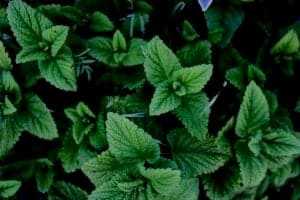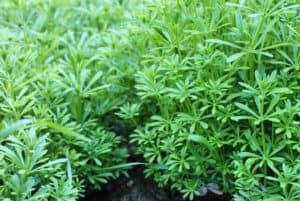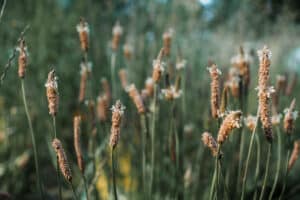Scott Kloos is an herbalist, wildcrafter, and medicine maker. He founded and acts as the managing director of the School of Forest Medicine and owns Cascadia Folk Medicine, which supplies high-quality, small-batch herbal extracts from the native plants of the Pacific Northwest region. He also co-founded the Elderberry School of Botanical Medicine in Portland, Oregon, and authored the book Pacific Northwest Medicinal Plants: Identify, Harvest, and Use 120 Wild Herbs for Health and Wellness.
I always think of Scott as a fellow plant brother and someone I really see eye-to-eye with. For this episode of the Plant Path, I had the opportunity to connect with him, hear more about his relationship to wildcrafting, and what’s in store for all of us in his upcoming course, Relationships of Loving Reciprocity.
He’s currently running a Kickstarter campaign to help fund the final creation and launching of that course with some sweet perks. Check it out right here: https://www.kickstarter.com/projects/forestmedicine/relationships-of-loving-reciprocity
In today’s blog post, you’ll learn:
- What wildcrafting is and how it differs from regenerative wildcrafting
- The unique ways that wildcrafting local plants can reconnect you to yourself, your body, and your environment
- Why developing a relationship that’s not only transactional but heartfelt, is so important when wildcrafting plants
- About Scott’s upcoming project, and how you’ll have the chance to enter the woods with him from the comfort of your own home
Sajah: It’s been a while since I did an interview, and today I’m thrilled to have my good friend, colleague, and fellow Pacific Northwest Herbalist, Scott Kloose, with me. We’ve known each other for ages, attended herb conferences together, and share the same perspective on medicines and working with people. Scott is the founder of the School of Forest Medicine and author of Pacific Northwest Medicinal Plants. He’s a real plant brother, and I can’t wait for him to share his unique insights into herbal medicine. Welcome to the show, Scott!
Scott: Thanks, Sajah! I’m excited to be here and it’s always a pleasure connecting with a plant brother. I remember our first meet-up at the Portland Plant Medicine gathering. I tried your medicine, and for the first time, I felt the same resonance I get from my own herbal medicine. It was like, “Yep, this guy is in tune with the plants and is working deeply in relationship with them.” I could just feel it in the medicine.
I remember feeling the same way about trying your herbal medicine. There was something extra, not just well-made medicine on a pharmacological level, but something hard to put into words. It’s your connection to the plants that really comes through, and that’s something I appreciate about you and your approach to herbal medicine. Your approach recognizes that herbs aren’t just a natural alternative to drugs. They hold intelligence, spirit, and a healing power that impacts us beyond the physical body.
Absolutely. Just the other day, my son hurt his finger playing basketball, and after applying Arnica, St. John’s Wort, and Cottonwood Bud Oil, he said it still hurt. I explained how it’s not about a quick fix; it’s about reminding your body of what it already knows how to do, but may have forgotten a little bit. Plants are intelligent teachers who guide us on multiple levels, not just in helping our physical bodies reconnect with innate healing wisdom but also in fostering positive interactions with all the beings we share this planet with.
I love that. Your focus on connecting and relating with plants is so central to your work, and it’s evident in your work exploring wild spaces, mountains, forests, and fields to identify and work with local medicinal plants. You’ve honed the specialty over the years of engaging with plants in their natural habitat and you’ve mentioned the term “regenerative wildcrafting” before. What does that mean to you, and how is it different from “regular wildcrafting”?
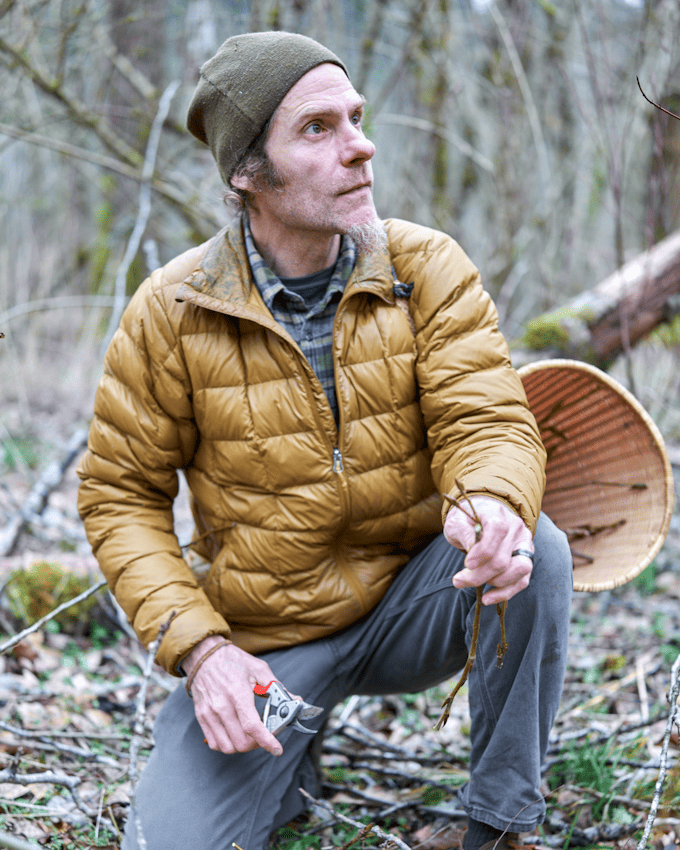
Wildcrafting is the basic idea of harvesting plants from the wild. However, for me, it goes beyond that. It’s about breaking down the distinction between the human and the wild. We often see the wild as something outside of ourselves, which creates a sense of fear and separation. For me, wildcrafting is based on the perception that I too, am a part of the wild. I call it wild nature to emphasize our inherent connection to nature. Nature isn’t something outside of us—it’s inside us. Because wild nature exists in us, it exists everywhere, in the rugged mountains and in New York City. Wildcrafting, for me, is a practice that brings all of this together.
Now, the regenerative part. Regenerative literally means “to create again.” This process happens when we align with natural forces of regeneration present in ecosystems, plant bodies, and within ourselves—physically, emotionally, and spiritually. So it’s not just about ensuring that more plants will grow after harvesting; it’s about understanding the regeneration cycle of the wild nature and aligning with it so we can support it instead of interrupting it.
Do you feel like wildcrafting is an important skill for herbalists to know? There’s such a big surge of interest in herbal medicine these days, and sometimes I feel concerned about the potential impact on ecosystems if everyone engages in wildcrafting without considering the need for regeneration. How might this affect medicinal plants in the long term?
Absolutely. Seeing how many copies of my book, Pacific Northwest Medicinal Plants, sold made me realize how many people out there (at least in this region of the world) are interested in herbal medicine and wildcrafting. Over the years teaching wildcrafting, I’ve noticed two archetypes: people who are ready to dig up whatever they find without a second thought, and those who feel too bad for the plant or ecosystem to harvest. Even though these two archetypes are practically opposite, they’re embodiments of the same thing: a belief that you are separate from nature. With some exceptions, ecosystems and plants are typically very resilient, and when wildcrafted correctly, they grow back. Back to your question though, I believe we need more interaction with the wild, not less. We need respectful interaction, fostering not just reverence for plants and ecosystems but also for the forces working tirelessly to sustain life. It’s about aligning with the ongoing creation of life and developing a profound reverence for that process.
I’ve come across those archetypal wildcrafters too. There’s the super eager wildcrafter who might not be paying much attention and dig up all the Angelica they see, and then there’s the more timid person. There’s a spectrum, but beneath both approaches is a disconnection. When you dig the root of a plant, its life may be taken away, but it’s the plant’s life force that can restore a person’s life force, and that’s the regenerative cycle. There’s a reciprocal relationship there that sustains the ongoing cycle of life.
Yeah, that resonates with me. Wildcrafting isn’t a transactional process of taking a specific amount of plants to make a set quantity of medicine. That transactional mindset is prevalent in our culture, but when there’s a genuine relationship, it transforms the entire approach. Before harvesting a plant, I spend time in its wild habitat and offer prayers and intentions. These prayers aren’t just about permission—they’re a way to open me up and align with the plants so I can determine whether it’s appropriate for me to harvest there. There’s an old wildcrafting rule of only harvesting one plant for every twenty you see. For me, it’s not enough to follow reductionist logic. Every ecosystem is unique and has additional factors that influence how much you should harvest and how much you should leave.
When I wildcraft, there’s a dual relationship at play—first with the place and then with the plant. In the moments of prayer before harvesting, I reflect on the plant’s contributions to me and the community. I envision myself as a node, tapping into a life stream that spans thousands of years through humanity’s existence. Plants like St. John’s Wort have this enduring lifestream, and we become conduits for that energy. As the medicine infused with this awareness circulates within the community, it creates a reciprocal exchange. The entire process is grounded in a relationship orientation, emphasizing the interconnectedness of all elements involved.
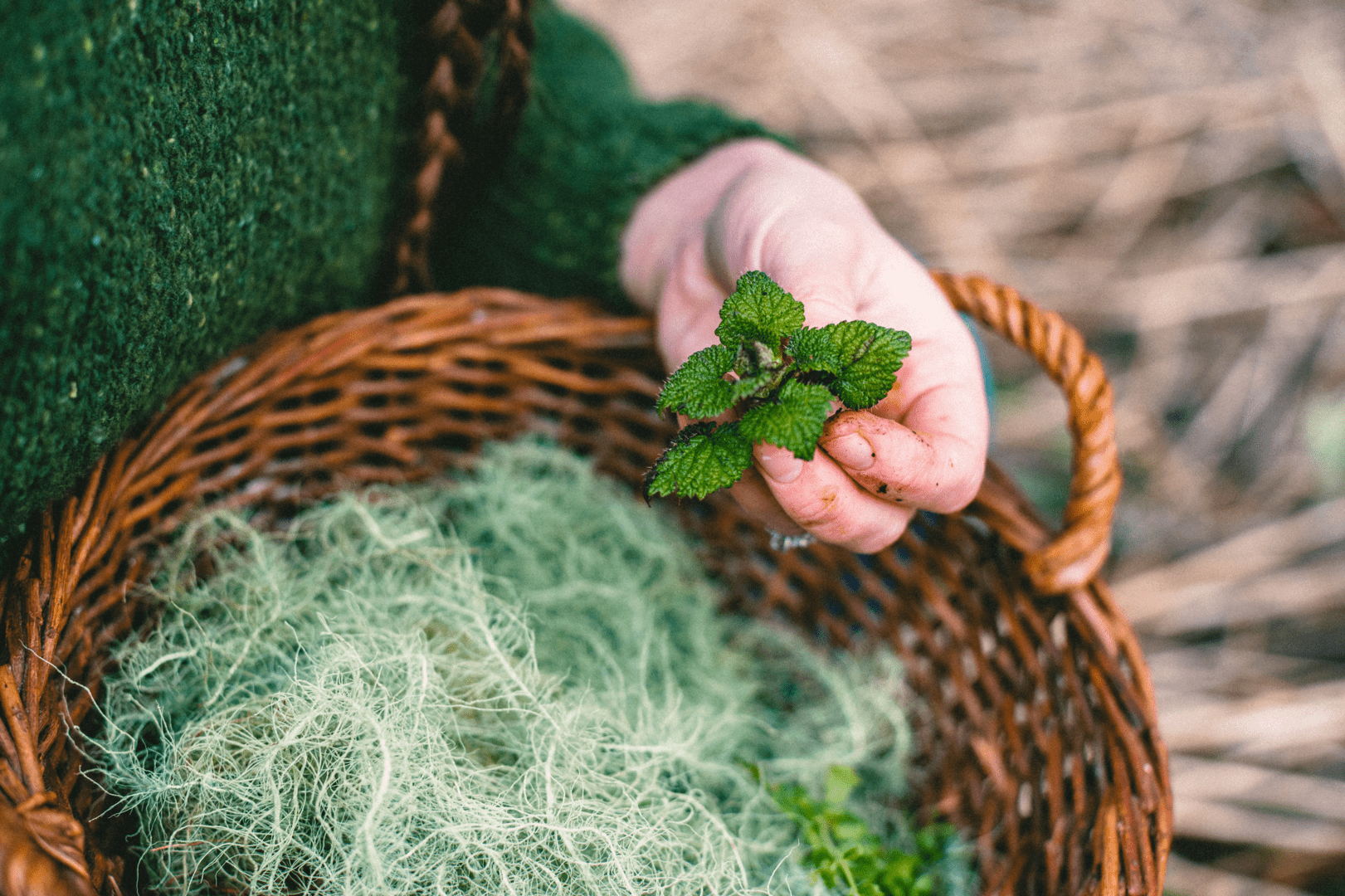
Do you think wildcrafted herbs produce a different kind of medicine compared to cultivated plants? Is there a noticeable difference for you?
Now you’re really gonna get me in trouble! I do believe there’s a difference between them. There’s a time and place for using cultivated plants, and they can produce excellent medicine, but I feel that wildcrafted plants provide a stronger medicine on the archetypal, energetic, and even chemical levels. Cultivated plants have a real presence to them—just think of the difference you feel eating cultivated lettuce you buy in the grocery shop versus some wild Dandelion leaves. Wild plants have weathered world stresses and had to adapt to survive, which adds a distinct intensity and quality to their medicine. If I were to cultivate plants, I’d still expose them to stressors to mimic a wild environment, such as sporadic watering. Overall, this leads to stronger plants, which provide more potent medicine. When I worked at Herb Pharm, they found that stressing their Echinacea plants, such as having big intervals where they wouldn’t water the plants, led to a much higher quantity of protective constituents. We can learn a lot from that.
I’ve always wondered about this, especially when studying pharmacognosy. Many medicinal compounds are secondary metabolites triggered by stressors. Wild plants go through challenges like deer nibbling, temperature extremes, and exposure to the elements. They get stressed and need to adapt to survive, and this is a teaching we can learn from in our lives in times marked by stress, overwhelm, and constant input from various directions. The wild plants, having navigated these challenges, can guide us in finding balance.
Two stories come to mind regarding this topic. One involves a friend who’s a traditional healer from Uganda and was doing a program where he brought traditional medicine into hospitals for scientists and doctors to test. With this opportunity, he decided to do an experiment. Using plants from the same place and day, he harvested plants in two ways: One without intention, and the other after singing and praying. When the scientists tested their levels of constituents, they found the herbs he sang and prayed to had much higher levels of compounds compared to the other.
Another anecdote comes from a wildcrafting and medicine-making apprenticeship. In this group, people would bring a medicine they made once a month. There was one woman in this circle who harvested Nettles when she was in a really bad mood and prepared a tincture with it. The next day she harvested Nettles in a calm state, prayed, harvested them with gratitude, and prepared another tincture with them. She brought both tinctures for us to taste and didn’t tell us which one was which. Despite this, you could clearly feel which tincture she prepared when upset and which was made in a good state. This really highlighted the impact of intention and alignment when harvesting and preparing herbal medicine.
Another aspect that struck me, particularly during COVID-19, was the challenge of sourcing herbs from stores. The supplement aisle was cleared out, and finding specific herbs became a struggle, with some companies being temporarily shut down. It really made Whitney and I think about the importance of knowing your local plants and not being too dependent on external companies to find your medicine. Aside from availability, this reliance also makes us lose a connection with our local environment. When you use plants from your local environment, they experience the same seasons and habitat as you. Considering this, do you think there’s an importance to using local plants to support people in that bioregion?
That definitely makes sense to me. That’s why my medicine-making venture, Cascadia Folk Medicine, uses only bioregional herbs. After moving so often, the herb gardens I worked so hard on would become neglected, and I realized it was time to make the wild places my garden. Using plants that endure the same environments that you do fosters a deeper connection to the place you’re living and can help you feel more rooted. I believe a big reason why people feel so anxious today is because they’re not rooted. If you were suddenly dropped in a forest with no information on how to survive, that would make you feel really anxious. However, if you grew up in the forest, you’d know how to look out for danger, find safety, and forage food. Similarly, navigating our societal jungle requires understanding our surroundings. Wildcrafting is a way to get connected and rooted in the places you inhabit.
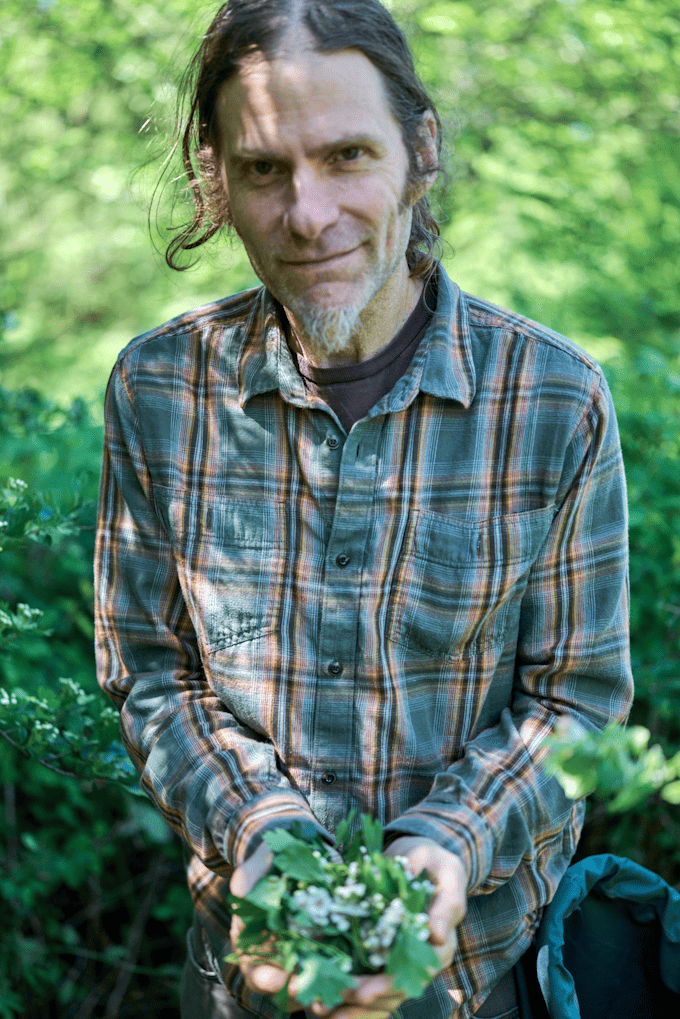
For listeners new to wildcrafting and plant identification, where would you suggest they start developing the skills necessary to get comfortable with the process? What do you think of those plant-identification apps?
I think those apps further our disconnect from our natural environment. I suggest finding a few plant ID books to work with. There are two main types I’ve seen. One divides plants by flower color and appearance, which can be useful but you obviously have to be around the plant when it’s in flower. Others break them up by family, which is a useful approach because you learn to see patterns and connections between plants that share a particular family, such as Lamiaceae (mints) plants having square stems, opposite leaves, and typically an aromatic quality. Learning to recognize plants in the same family can make identification easier. Although I used to dismiss the Western approach of botanizing, it gave me a strong sense of what to look for and how to understand the different plants. One book that I recommend to get a solid introduction to botany is by Thomas Elpel, Botany in a Day. You can even find books that discuss plants growing in specific parts of North America, or bioregional field guides. These are usually good places to start because they focus specifically on what plants are in your area.
My next suggestion is to start with the easy plants—the ones you can easily identify, grow abundantly, and don’t have any toxic lookalikes. For example, Nettles, St. John’s wort, and Red Cedar. These are super resilient plants and even after wildcrafting, will grow back lushly again.
When it comes to wildcrafting, what’s your process for finding the right spots? People often spend a lot of time searching for their locations and can be protective of them. How do you decide where to go and where it’s okay to find a specific herb?
This is a question I get a lot. The first thing is to know that you can’t harvest on another person’s private property. Even in times before the concept of private property, people had their zones, and respecting those spaces was important. Also, If you come across a wild place with abundant medicinal plants or thriving huckleberry patches, be cautious, as it might be an indigenous garden. Watch out for these, be respectful, and leave these areas undisturbed.
I recommend exploring places already disturbed by humans for harvesting common herbs like Yarrow and St. John’s Wort. Obviously you don’t want to harvest along the side of the highway, but many medicinal plants like to grow in human disturbed areas (such as a clearcut). If you want to wildcraft in more remote areas, spend time hiking on forest roads to get a sense of what grows there. The legalities of where you can wildcraft differ in different range districts, so always research to find out if you can harvest plants from these areas before doing so. Sometimes you’re allowed to wildcraft for personal use, but not for profit.
Can I ask you a question? I’m intrigued by the whole spagyric and alchemical process. When working with plants, what’s your process for connecting with the essence of the plant during the spagyric alchemical process?
It’s pretty similar to your process of wildcrafting, including how you approach, gather, and infuse intention into your harvesting process. It’s similar within the laboratory as well. I always say that if you’re in a bad mood, don’t go to the lab. The medicine is sensitive, and your inner state affects the process, even if it just makes you prone to dropping things. This is especially true with distillations, when the volatile oils or spirits become invisible vapors they’re sensitive to the practitioner’s thoughts, feelings, and astrological influences. It’s really important to be clear and receptive during that process.
Choosing the timing to harvest and prepare the medicine is a big deal as well. Each plant has an archetypal force associated with it elementally and astrologically. Just as in Traditional Chinese Medicine or Ayurveda, where certain hours are linked to specific energies and organ systems (usually based on Elements or Doshas), the Western system divides time according to planetary influences. If a plant has a particular planet associated with it, I’ll prepare it during the hour of its planetary ruler. Similar to your process, there’s something we need to be in tune with to make medicine, and this is where the relational dynamic comes in. You’re not just thinking about dinner while working in the lab. You’re offering prayer, intention, and presence for each step of the process.
I love how there’s a similarity to what I’m describing, just from a different orientation. It’s all about allowing ourselves to be influenced and aligned with the plant so we can help amplify its own will in operating in the world.
That’s right, it’s all about connection. My teacher, Robert Bartlett, has a chapter in one of his books called “The Alchemical Eucharist” where he writes that when you’re preparing herbal medicine, or in your case, wildcrafting, how there’s a feeling that emerges. That feeling is how the plant communicates with you. When you can be a receptacle for this sensation, you can infuse the spirit of the plant into your medicine and imbue an esoteric quality to it.
What you describe as esoteric is actually very practical. A lot of people believe that the spiritual and physical are separate, but they’re not. It’s important to help people see that these two things are connected. Many people, especially the super-rational, reject the spiritual parts of herbalism. However, it’s often those same people who break down in tears after having a profound spiritual experience with a plant. I want to inspire people to find their distinct way in herbalism. No two herbalists practice the same way, and it’s about letting the plants express through you and offering that to the people you love. I think we all have the capacity to feel these things and work with herbs in this way.
I’ve also had a lot of heady-intellectual people scoff at the whole idea of plant communication, dismissing it as woo-woo. But in reality, it’s all about reintegrating humans with the natural world and dispelling the illusion of separation. Steven Harrod Buhner always says that we need to learn how to trust our feelings as a means of communication as much as we trust our thinking. This doesn’t even necessarily mean your emotions. It can refer to the deeper subtle, intuitive sensations you feel when working with a plant. When people rewild, they awaken something essential that’s been missing—what it means to be a human being on this Earth.
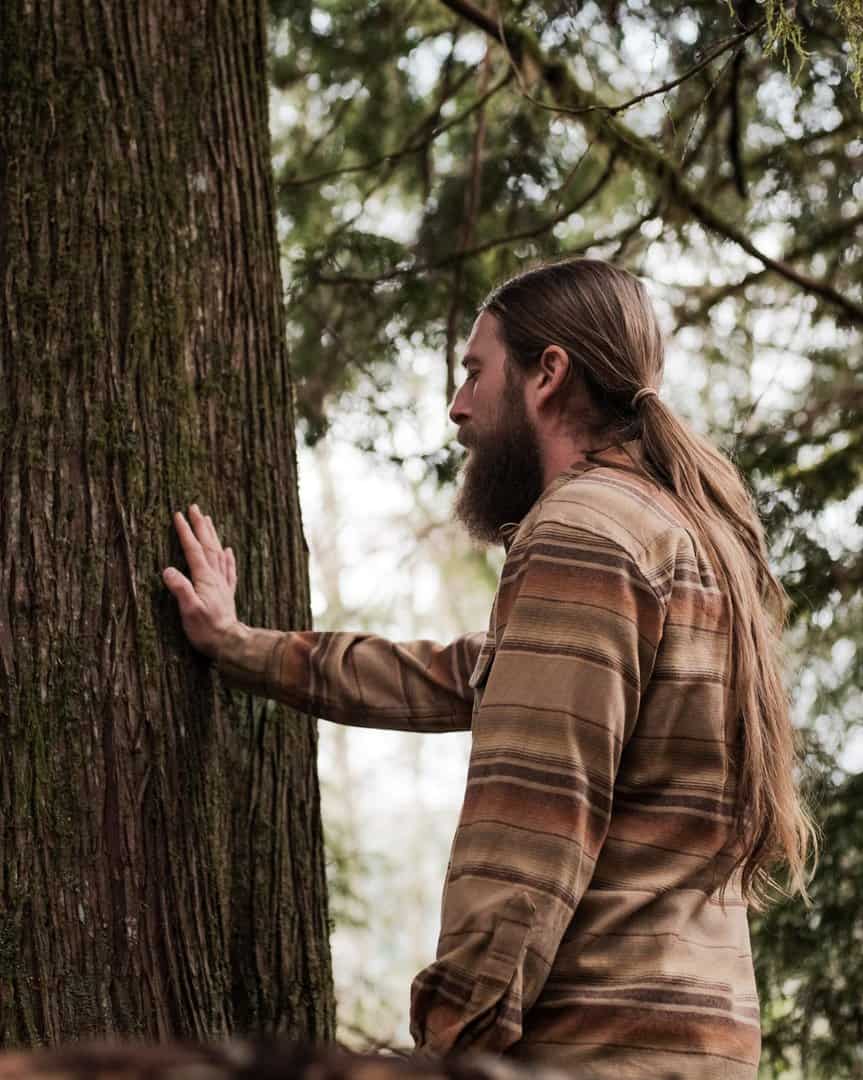
Absolutely. I see so much depression, anxiety, and confusion in people, and I think it’s because of the disconnect we have from nature. If you don’t have a way to interact with nature, you’re not receiving other forms of connection (spiritual, energetic, intuitive). This blockage can lead to depression and confusion since you’re relying on your rationale alone, and this doesn’t always match how your body is feeling. When I see people feeling this, I take them out into wild places undisturbed by humans and do ceremonial rituals with plants. During that time, I saw a transformational process happen where there was a shift to a more natural and complete state of being.
Medicine, whether herbal or conventional, focuses so much on what’s wrong with you. So much of that stems from guilt and thoughts like “It’s all my fault.” Stepping into the wildness helps people realize there’s nothing inherently wrong with them. We can’t be healthy unless our ecosystem is healthy, and this expands to our social situation, political environment, and other living factors. This perspective is at the core of my project, which not only promotes individual well-being but also understands that true health extends to our ecosystems. Wild plants can help us unravel cultural conditionings that keep us separate and reconnect us with the untapped facets of our human potential.
That perspective shows there’s a broader context to wildcrafting medicinal herbs beyond the field. You’ve got an exciting project coming up where you’re crafting a course on wild regenerative wildcrafting. Could you share your vision for that, tell us what the essence of the project is, and what participants can expect from the course?
Yes, the course is called “Relationships of Loving Reciprocity,” and it features two core components: regenerative wildcrafting practices and the art of crafting medicines infused with the wisdom of the wild. We’ve been working on it for nearly two years!
The backbone of the course consists of well-produced videos, each focusing on different plant parts we harvest. I also purposely chose plants that don’t only grow in the Northwest, but grow all over, like Alder, St. John’s Wort, Nettles, and Queen Anne’s Lace. But the skills you learn with one plant can easily be transferred over to others. For example, once you learn how to gather the seeds of one plant, you can apply that with other plants where you’re wildcrafting seeds. These videos were filmed by a professional filmmaker and offer an intimate view, showcasing the intricacies of the wildcrafting process. The attention to detail, including close-up shots and slow-motion footage, captures the essence of the wildcrafting experience, illustrating the principles we discuss in a tangible and meaningful way. This way, you can learn how to wildcraft yourself even if we’re not in the same forest together.
It sounds like you put it together to make it feel like the viewer is right there in the woods with you.
Yeah, that’s the idea. It’s like an invitation to join me in the forest to experience it together. The course will include an ebook based on the wildcrafting teachings I’ve shared for years. It’ll also include a compact field book which can fit in your pocket so you can take into the woods with you to do site assessments, get into the right state of mind before wildcrafting, and become aligned with the plant so you can harvest it intentionally. Over time, I plan to add more content. When you purchase the course, you get lifetime access to all of these materials.
That sounds awesome. I can’t wait to check it out and get my own copy. It was amazing having this time to connect with you, Scott. Thank you so much for sharing your knowledge, wisdom, and experiences with everyone here on the Plant Path. Your insights are valuable reminders, even for seasoned herbalists. Are there any closing words you wanna share before we end?
I deeply appreciate having the opportunity to connect and nerd about plants in a way where there’s no need for translation. I want to encourage everyone to get out and interact with the wild places. Start in a way where you’re feeling cautious, but not fearful. Develop your relationship with the wild so you can find your way back to the wildness within yourself. Through that, you can become a healthier human being in a better relationship with the world around you.  Help Scott Finalize His New Course!
Help Scott Finalize His New Course!
I’m very excited Scott is making this course on wildcrafting and medicine making, but he needs some help to put the finishing touches on it and get it published.
Right now he’s running a Kickstarter campaign to raise funds to finish production of his course and your help would be most appreciated!
There are some awesome perks when you support his project, even opportunities to meet Scott and do some in-depth work in the forest and be mentored in the art of regenerative wildcrafting.
Click the button below to check it out and support his cause:


